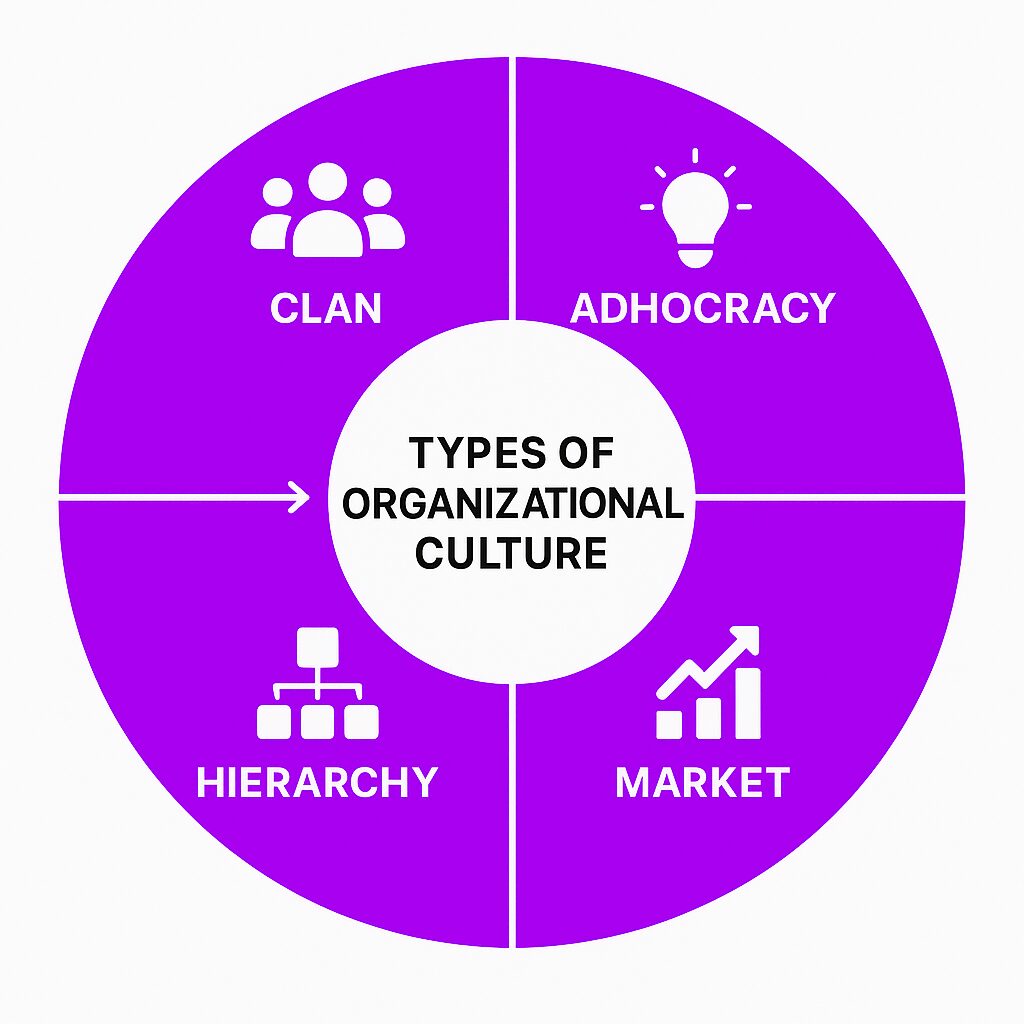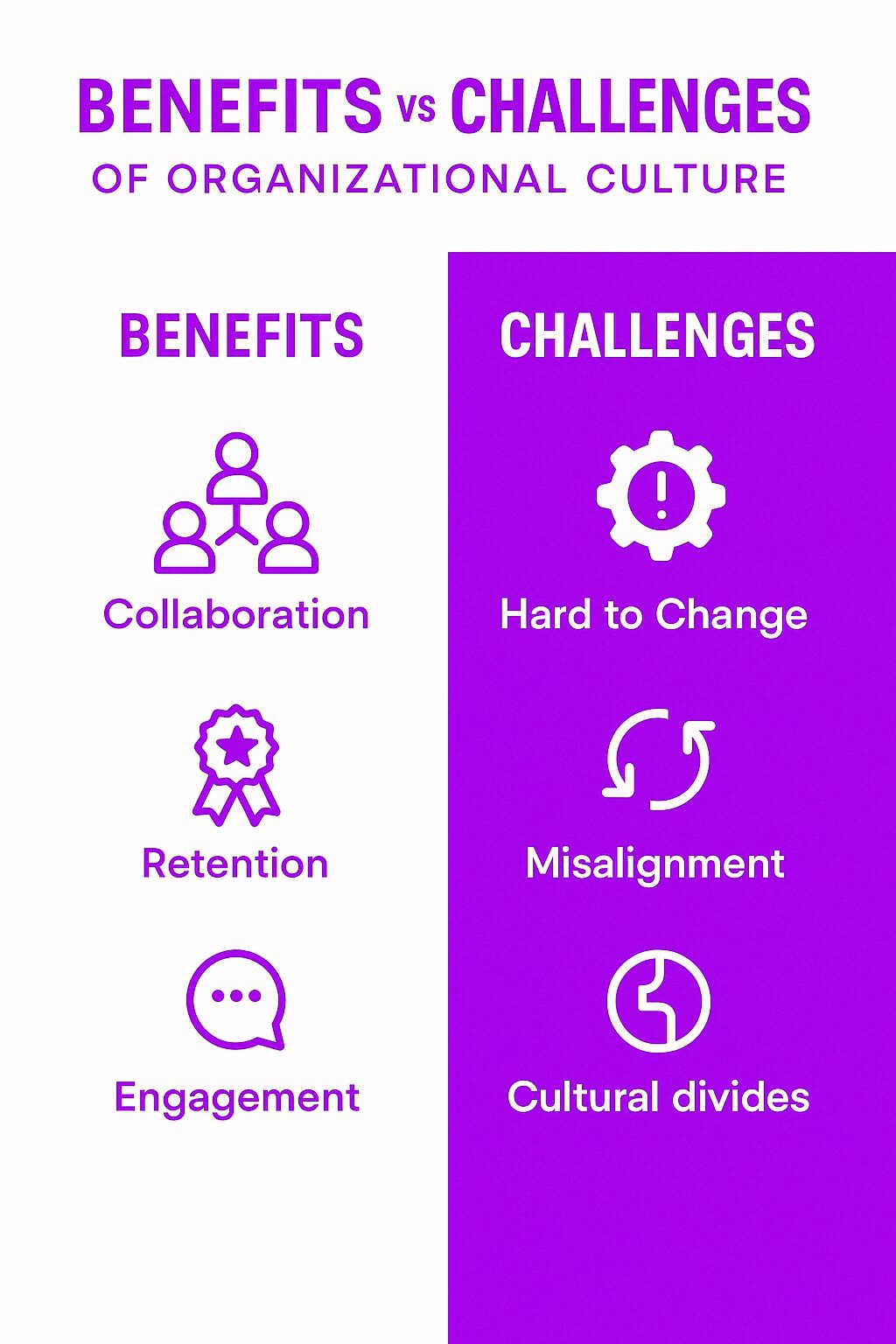What Is Organizational Culture?
Organizational culture is the shared values, beliefs, and behaviors that shape how employees interact, work, and make decisions within a company. It influences everything from employee satisfaction to business performance. Whether intentional or not, every company has a culture that defines how work gets done and how people relate to each other.
A company’s culture is not written in policies alone—it is reflected in daily actions, communication styles, and decision-making processes. It affects how employees feel about their jobs, how teams collaborate, and how leadership engages with the workforce. A strong company’s culture can drive engagement, retention, and productivity, while a weak or toxic culture can lead to high turnover and poor performance.
How Organizational Culture Works
Culture develops over time based on leadership, workplace practices, and shared experiences. It is shaped by:
-
Leadership and Management: Leaders set the tone for workplace culture through their behavior, communication, and decision-making.
-
Company Values** and Mission**: What a company stands for and prioritizes influences its culture.
-
Employee Interactions: How employees collaborate, give feedback, and support one another shapes cultural norms.
-
Work Environment: Whether employees work remotely, in an open office, or in a hierarchical structure affects culture.
Culture is dynamic, meaning it can evolve with leadership changes, company growth, or external factors such as industry trends. An organization’s culture plays a crucial role in achieving key performance goals, enhancing employee engagement, and improving retention.
Factors That Shape an Organization’s Culture
An organization’s culture is shaped by a myriad of factors, each playing a crucial role in defining how employees interact and how work gets done. These factors include company values, leadership influence, organizational structure, and HR practices. Understanding these elements can help leaders cultivate a strong organizational culture that drives success.
Company Values
At the heart of any strong organizational culture are the company values. These are the guiding principles that dictate how employees behave and make decisions. When a company’s values are clearly defined and embraced by all, they create a positive workplace culture that fosters collaboration and innovation. Employees who share a common set of values are more likely to work together harmoniously towards shared goals, resulting in higher productivity and job satisfaction. For instance, a company that values transparency and open communication will likely see more effective teamwork and a more engaged workforce.
Leadership Influence on Organizational Culture
Leadership is a powerful force in shaping an organization’s culture. Leaders set the tone for the entire organization through their actions, decisions, and communication styles. When leaders embody the organization’s values and actively promote a positive workplace culture, they inspire employees to follow suit. Effective leaders understand that their behavior has a ripple effect throughout the organization, influencing how employees interact and perform. By modeling the desired culture, leaders can create an environment where employees feel valued, motivated, and aligned with the company’s mission.
Organizational Structure
The structure of an organization can significantly impact its culture. A hierarchical structure, with its layers of management and formalized procedures, may lead to a culture characterized by bureaucracy and rigidity. In contrast, a flat organizational structure, with fewer levels of management, can promote a culture of collaboration and innovation. The way an organization is structured affects communication, decision-making, and employee empowerment—all critical components of a positive workplace culture. For example, in a flat structure, employees may feel more empowered to share ideas and take initiative, leading to greater innovation and job satisfaction.
Key Components of Organizational Culture
Values and Beliefs
These are the fundamental principles that guide company behavior. Values might include customer focus, transparency, or teamwork. An organization’s values play a crucial role in shaping its culture and guiding employee behavior.
Workplace Norms
Unwritten rules about how employees behave. These may include expectations around communication, collaboration, and professionalism.
Leadership Style
Top-down, collaborative, or servant leadership styles affect company culture. Leaders influence organizational culture by shaping and reinforcing the workplace environment and norms through their actions.
Communication Practices
Some companies encourage open, frequent communication, while others follow strict hierarchical structures.
Employee Engagement
How employees perceive their role and level of contribution influences workplace culture. Recognition programs, feedback loops, and growth opportunities affect engagement.
Types of Organizational Culture
Clan Culture
People-focused, family-like environments where teamwork and collaboration are prioritized. Common in small businesses and startups.
Adhocracy Culture
Encourages innovation, risk-taking, and creativity. Found in industries like technology and advertising.
Market Culture
Results-driven environments focused on performance, competitiveness, and achieving goals. Typically seen in sales and finance sectors.
Hierarchy Culture
Structured, rule-based workplaces that emphasize stability and efficiency. Common in government agencies and large corporations.
Why Organizational Culture Matters
Employee Satisfaction and Retention
A strong culture fosters loyalty and reduces turnover. Employees who feel aligned with company values are more likely to stay.
Productivity and Performance
Engaged employees work more efficiently. A positive corporate culture encourages accountability, motivation, and teamwork.
Brand Reputation
Customers and potential employees view a company’s culture as part of its identity. Companies known for positive workplace environments attract top talent.
Adaptability and Innovation
Companies with adaptable cultures embrace change, making them more resilient in shifting markets.
Benefits and Challenges of Organizational Culture
Benefits
-
Creates a sense of belonging and purpose.
-
Improves collaboration and teamwork.
-
Enhances leadership effectiveness.
-
Attracts high-quality candidates.
-
Reduces workplace stress and conflict.
Strong cultures arise from the clear alignment of organizational values, norms, and behaviors, which are reinforced through practices such as values blueprinting.
Challenges
-
Difficult to change once established.
-
Misalignment between leadership and employees can create disconnects.
-
Requires ongoing effort and reinforcement.
-
Cultural divides may exist in multinational or remote teams.
Best Practices for Strengthening Organizational Culture
Define and Communicate Core Values
Clearly articulate what the company stands for. Make values visible in decision-making, performance expectations, and recognition programs.
Lead by Example
Leadership influence organizational culture by modeling the behaviors they want employees to adopt. Actions speak louder than mission statements.
Encourage Open Communication
Regularly solicit feedback from employees and create a culture where people feel comfortable sharing concerns and ideas.
Hire for Cultural Fit
Recruit employees who align with company values while ensuring diversity of thought and experience.
Invest in Employee Development
Training and career advancement opportunities strengthen employee commitment and reinforce cultural values.
Recognize and Reward Behavior
Publicly acknowledge employees who demonstrate cultural values through their work and interactions.
Foster Inclusion and Diversity
A strong culture embraces different perspectives, experiences, and backgrounds.
Influence Organizational Culture through HR Practices
Human Resources (HR) practices are another vital factor in shaping an organization’s culture. From hiring and onboarding to performance management and employee development, HR practices that align with the organization’s values can reinforce a positive workplace culture. Effective HR practices help attract and retain top talent, ensuring that new hires are a good cultural fit and that existing employees remain engaged and motivated. For instance, a company that prioritizes continuous learning and development will likely have HR practices that support ongoing training and career advancement opportunities, fostering a culture of growth and excellence.
By understanding and leveraging these factors, leaders can take proactive steps to cultivate a strong organizational culture that not only enhances employee satisfaction but also drives business success.
Related Sub-Concepts
Organizational Climate vs. Culture
While culture represents long-term shared values, organizational climate refers to employees’ perceptions of their work environment at a specific time.
Corporate Social Responsibility (CSR) and Culture
Companies with strong CSR initiatives integrate ethical practices and social responsibility into their culture. Additionally, aligning employee values with organizational values is crucial for fostering a cohesive and committed workforce.
Remote Work Culture
With the rise of remote work, digital tools and virtual engagement play a key role in maintaining company culture.
Real-World Examples of Organizational Culture
Google: Innovation-Driven Culture
Google fosters an environment of creativity and risk-taking. Employees are encouraged to experiment, and failure is seen as a learning opportunity.
Netflix: High-Performance Culture
Netflix operates on a “freedom and responsibility” model, where employees have autonomy but are expected to deliver exceptional results.
Zappos: Customer-Centric Culture
Zappos prioritizes employee happiness and customer service, creating a fun, engaging work environment.
Toyota: Process-Oriented Culture
Toyota’s culture emphasizes continuous improvement (Kaizen) and quality control.
The Organizational Culture Assessment Instrument (OCAI) developed by Cameron and Quinn can be used to evaluate Toyota’s culture, categorizing it based on the Competing Values Framework.
Final Thoughts
Organizational cultures shape how people work, interact, and drive success within a company. While every business has a culture, the strongest ones are intentionally crafted and reinforced through leadership, communication, and shared values. By defining and nurturing the right culture, companies can create workplaces where employees thrive and businesses succeed.







